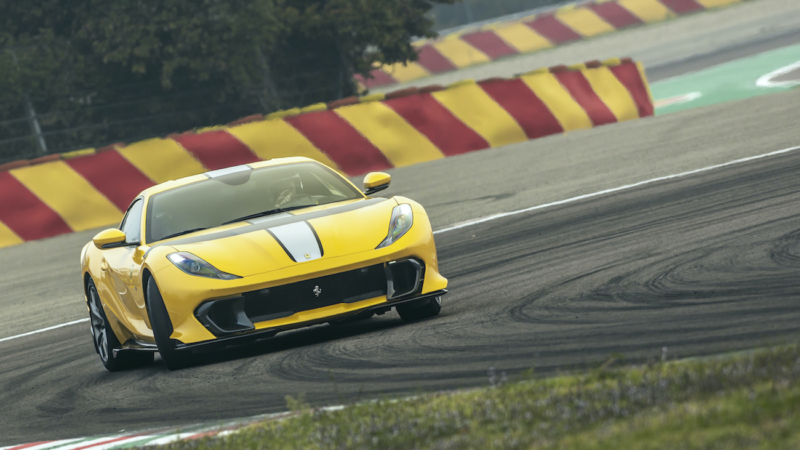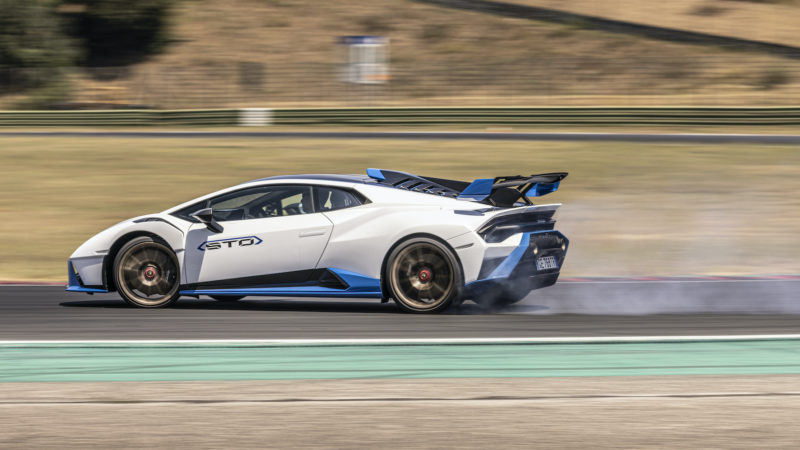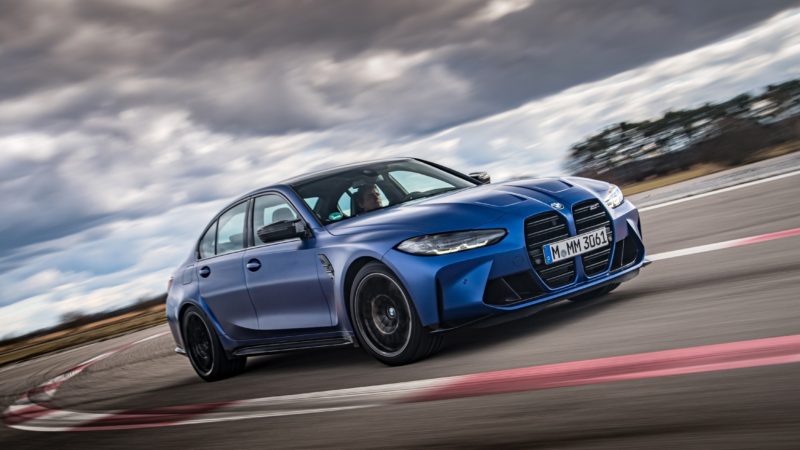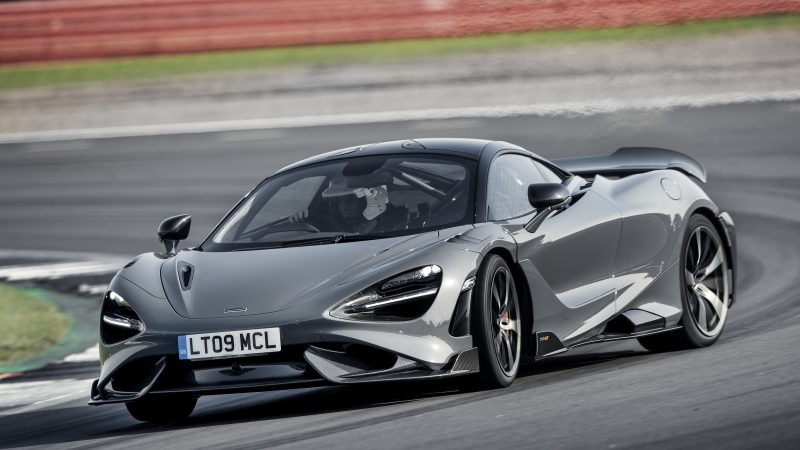Driving the Porsche 917, fifty years on
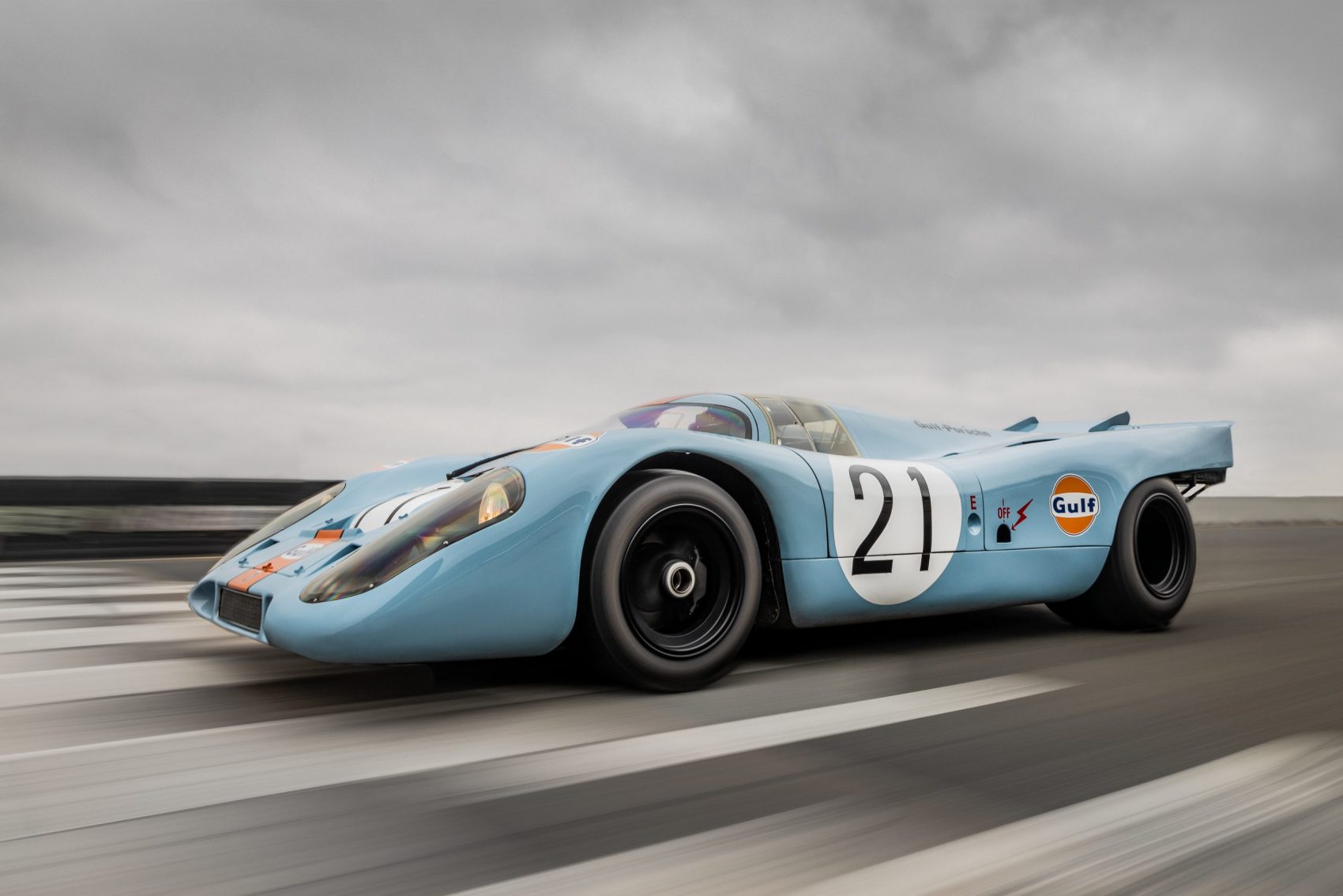
Richard Attwood won the 1970 Le Mans in a Porsche 917. Fifty years on, we drive a 917 at Sonoma
Fifty years ago on 14 June 1970, Porsche achieved the first of its record-breaking 19 wins at Le Mans, when Richard Attwood and Hans Herrmann crossed the finish line in the Porsche 917 – arguably the most iconic racecar of all time.
Now, like some surreal dream, 80-year-old Attwood is watching me climb in to the driver’s seat of a 917 on a sodden Sonoma racetrack north of San Francisco, California, calmly offering a few tips ahead of my first ever drive of this legendary machine. Unbelievably privileged barely covers it. Nor does unbelievably nervous.
The 917’s feathery fibreglass dihedral door hinges up and forward (taking a chunk of roof with it) and I slot down into the driver’s seat, with an improbably small second seat alongside to cheekily meet the two-seat regulations. I’m almost lying down, my legs stretch right out towards pedals that leave my feet alarmingly in line with the headlights, and still it’s a claustrophobic squeeze for my 6’ 1” due to the 917’s wind-cheating low-set shape. Even with the padding from the glassfibre seat removed (yes, uncomfortable and unsupportive), I have about a centimetre of headroom. I opt not to wear a helmet, otherwise it’ll be like driving in a neck brace.

The view out of the windscreen is goldfish-bowl domed, with the curves of the front wheel arches peaking above my shoulders. The steering is a perfect small black three-spoker, warning lights seem to be marked with Tip-Ex (Alt, Oil, BR), there’s a label ‘Wischer’ for the wipers, and the rev counter is tilted to put the 8000rpm redline at the top, bang in a busy driver’s line of sight. If it’s incredibly evocative, it also feels a little improvised – not a word I like to associate a with 200mph-plus racecar.
Conceived for the FIA’s new sports prototype regulations that required only 25 examples to be produced, the 917 was a development of the eight-cylinder 908 racecar, with which Attwood began his relationship with Porsche. While the 917 was Ferdinand Piech’s baby, chief engineer Hans Mezger was in charge of development – his death aged 90 in June 2020 lent extra poignancy to the 917’s 50th anniversary win.
‘The 908 was probably good enough to win all the races through 1969,’ says Attwood. ‘But Ferdinand Piech wanted something bigger and faster, particularly with Le Mans in mind.’
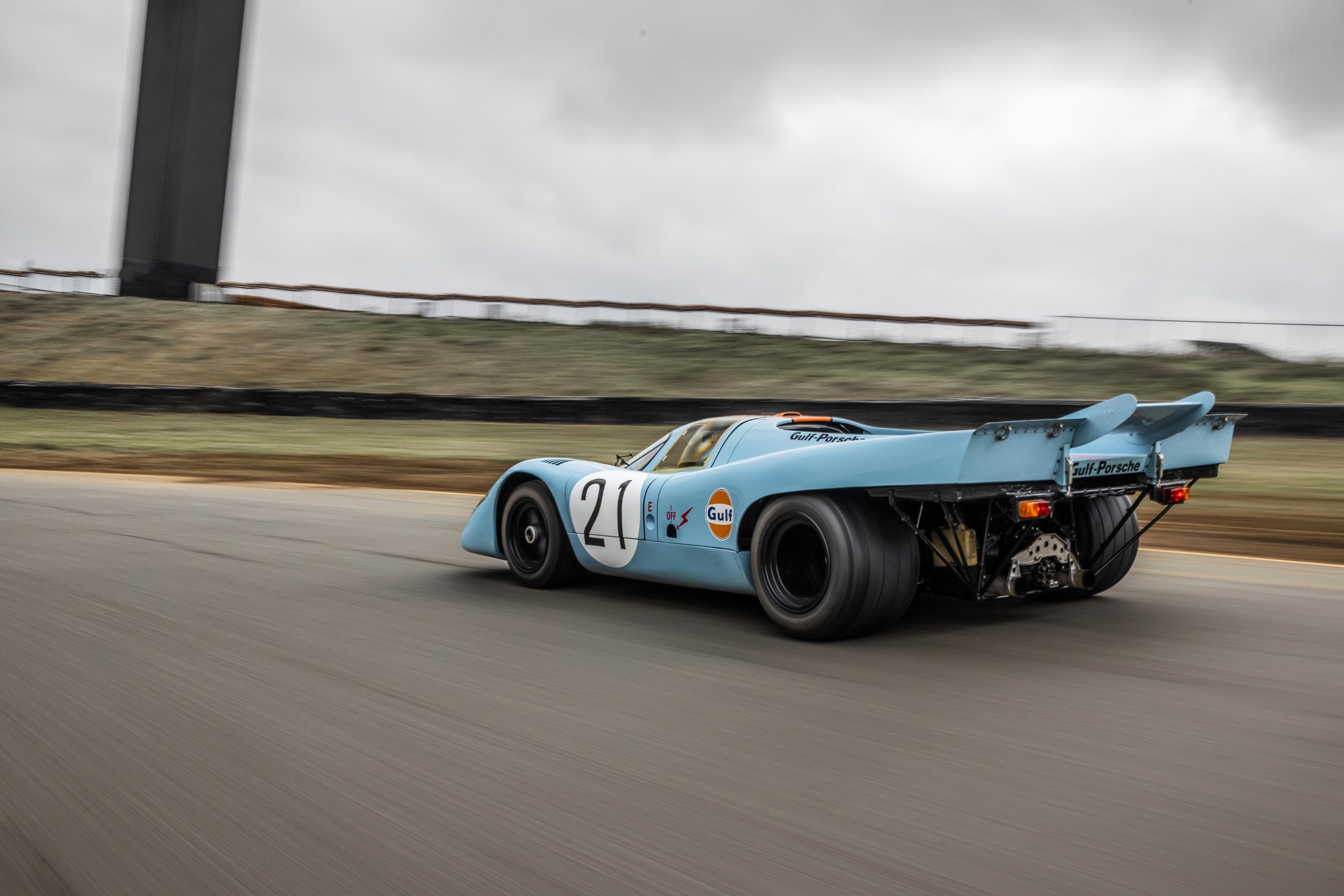
So while both 908 and 917 had lightweight spaceframe chassis, the 917 was fitted with a flat-12 engine, Porsche’s largest ever, with six throttles lined up either side of a central cooling fan – they’re exposed through the top of the rear bodywork like vertebrae.
Various configurations were available, from 4.5 to 4.9 and 5.0 litres and with either four or five speeds. The car I’m driving gets the largest 5.0 litre motor, and so produces around 620bhp in a car weighing only 800kg – the 775bhp-per-tonne remains a terrifying figure half a century on.
At a time when aerodynamics were not properly understood, the 917 was capable of 235mph (and later 246mph), though it wasn’t properly sorted when it debuted in 1969 and Attwood shared with Vic Elford – driving it for the first time in practice, having previously been highly reluctant to do so.
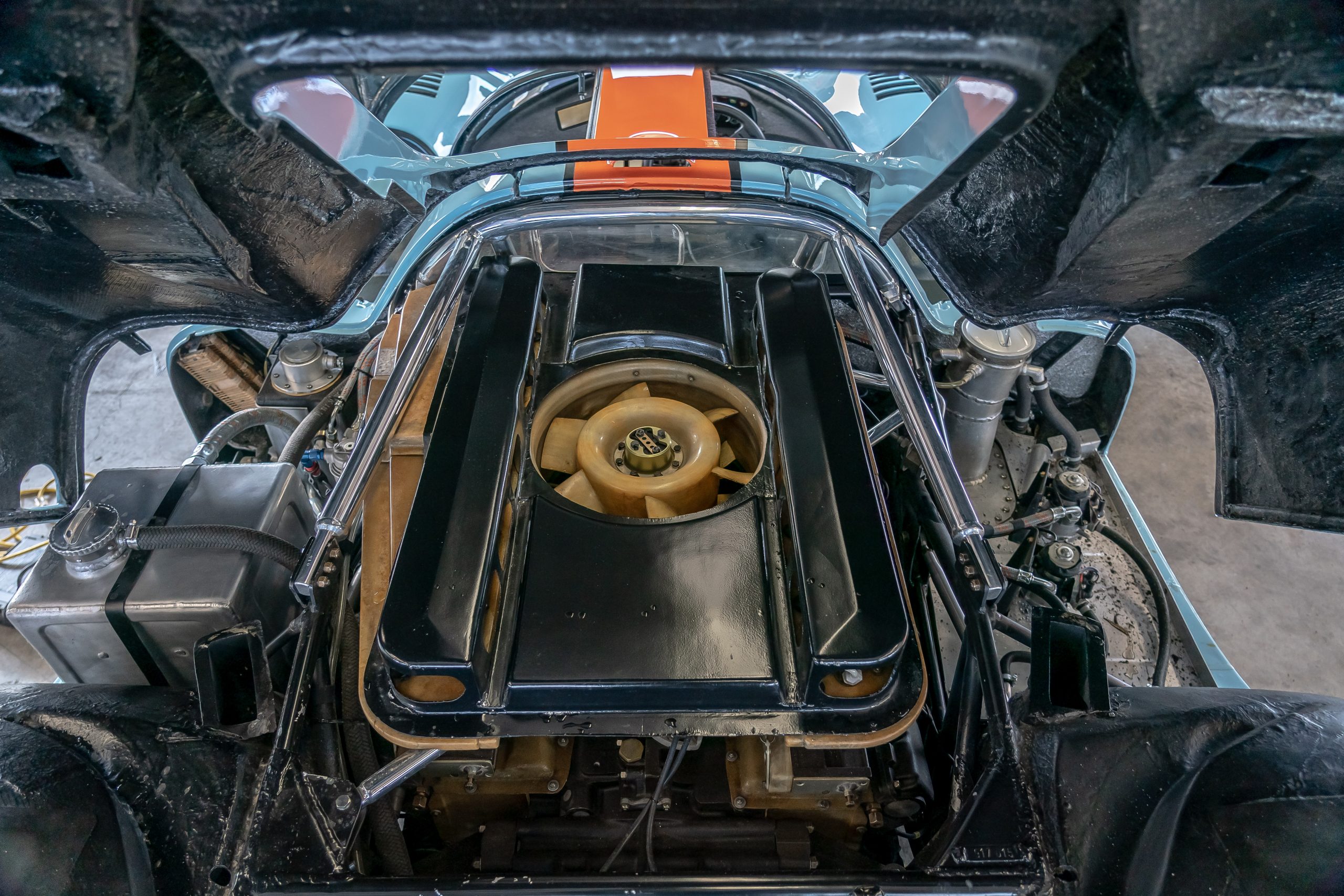
Confirming Attwood’s fears, 917 privateer John Woolfe was killed on the opening lap, and Attwood vividly remembers his gruelling double stints, the constant corrections to steering that felt unnaturally light because the nose was lifting, and the unbearable noise from the exhausts and how he’d rest his head against the bulkhead. ‘I was in a lot of pain after not even two hours,’ he grimaces. ‘Fortunately the race was dry, because in the wet I honestly believe we’d have retired.’
The 917 was tamed the following year, with the introduction of the 917K (Kurzheck, or shorttail) body, while new Longtail bodywork was also developed. ‘The Shorttail wasn’t as fast in a straight line, but you had the stability,’ recalls Attwood. ‘It was like a completely different car – we had to slow for the kink at the end of the straight the year before, now it was flat, piece of piss.’
It was the Shorttail with which Attwood and Herrmann won Le Mans, and that’s the variant I’m driving today – not the winning car in Salzburg colours, but its iconic Gulf colours couldn’t be more appropriate.
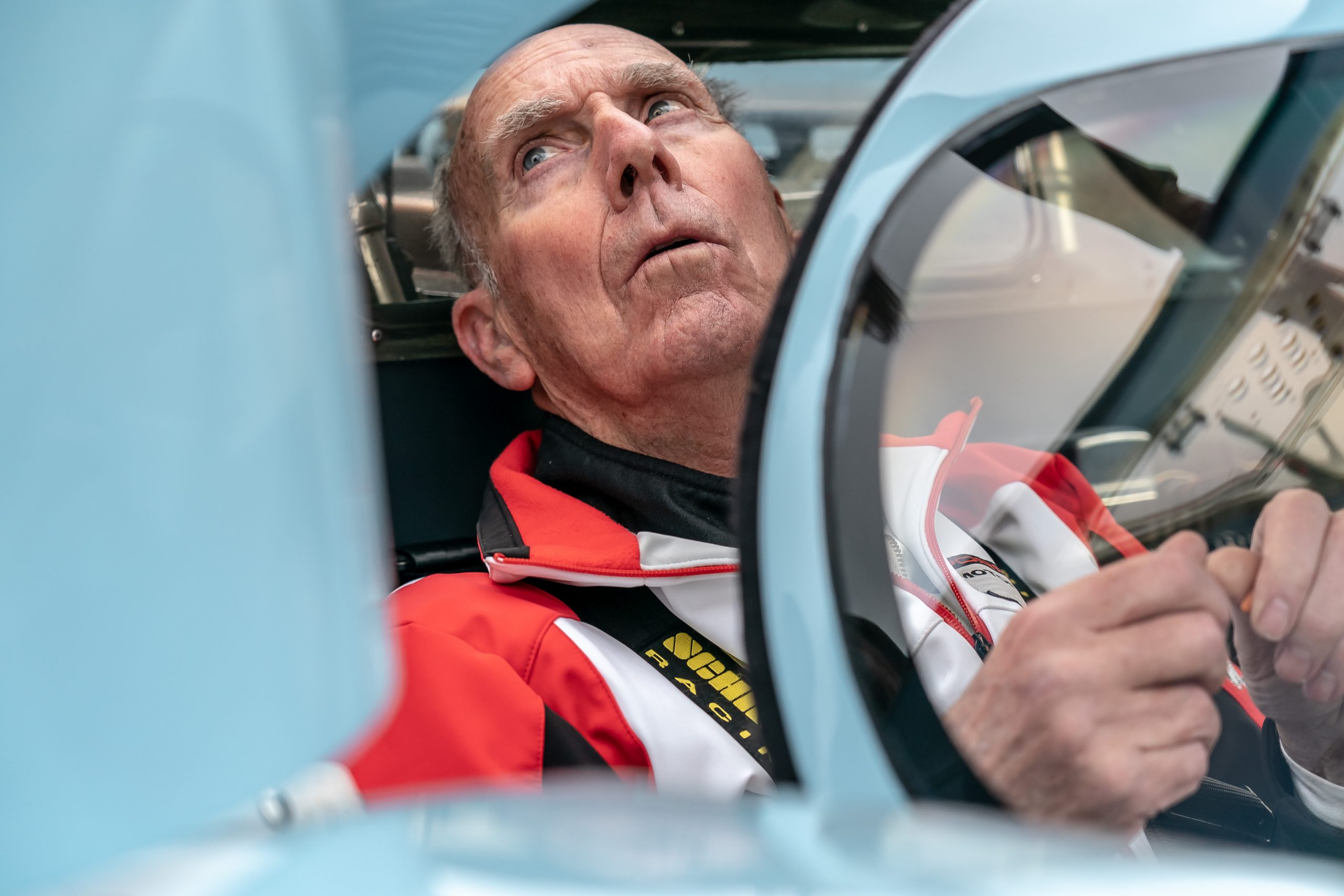
This is chassis number 15 of a total of 35, and run by British team JW Automotive Engineering in the 1971 World Sportscar Championship. The JW stands for John Wyer, who’d previously overseen Aston and Ford racing success and had been responsible (courtesy of his inventive engineer John Horsman, another recent RIP) for finessing the aerodynamics.
This car won the Spa round of the 1971 championship with Pedro Rodriquez and Jackie Oliver driving, finished second in Buenos Airies and third at the season finale at Watkins Glen. After one more race in the US in July 1971, it was retired, but didn’t lie idle – from 1972 to 1979 it was used as a race-taxi at Porsche’s Weissach race HQ (hopefully with a larger passenger seat) and has been at the Porsche Museum since 2009.
The bare cabin amplifies every movement with the engine dormant, and the ignition key seems inappropriately tiny for a car so intimidating, but one twist and the flat 12 explodes to life behind my head with an air-cooled chatter and thrum. The way the revs flick up with such lack of inertia is an early indicator of just how responsive this engine is with its titanium con-rods, quam cams and Bosch fuel injection.
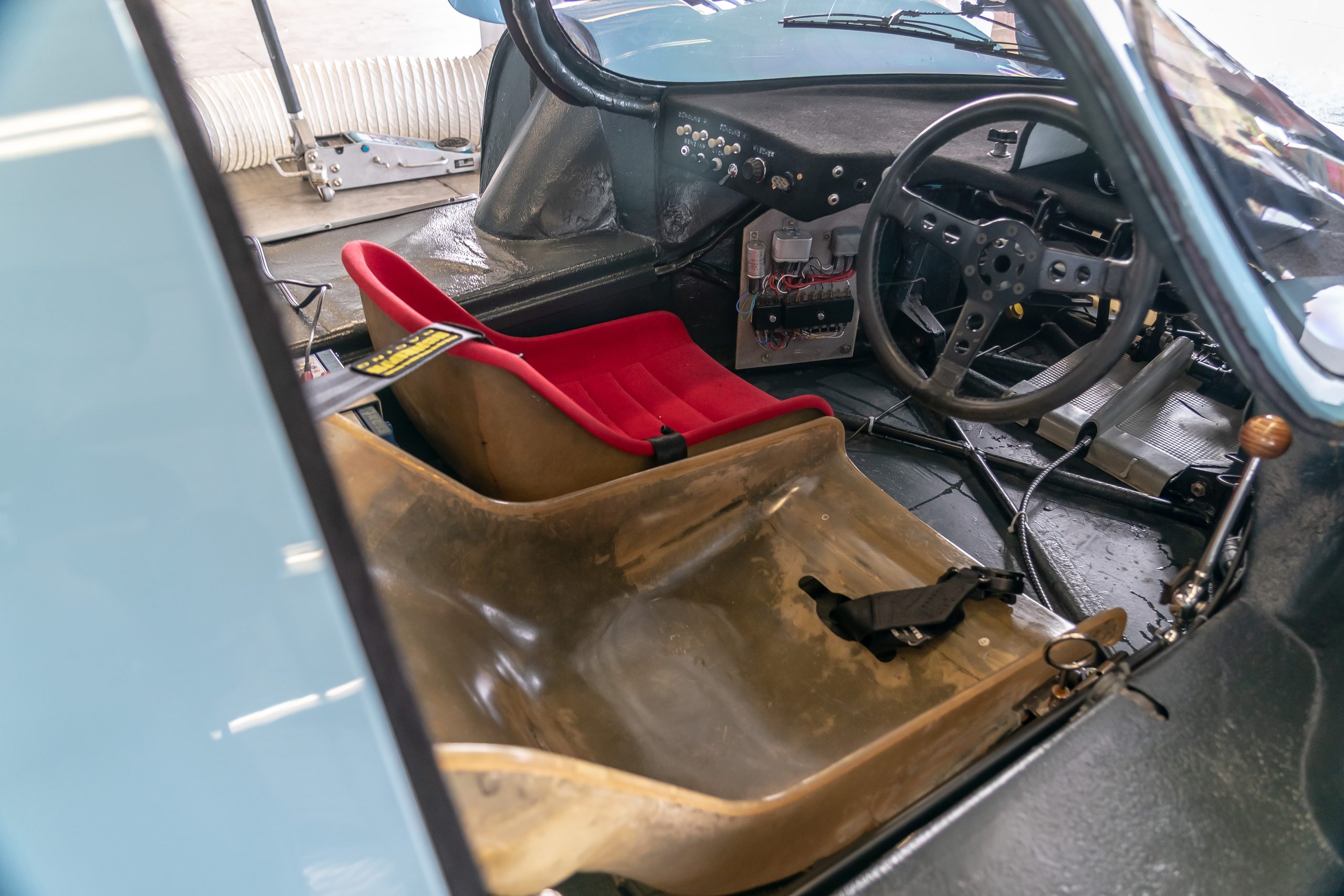
Unfortunately, the 917 has been shipped to Sonoma on cut slicks and there are no spares, so quick laps are out of the question. But I slot the famous balsa wood gearknob that’s to my right up into first gear (oddly, unlike the contemporary 911 there is no dog-leg layout here) and ease a clutch that’s heavy and tremors with tension as it bites in a narrow window at the top of its travel. With Attwood looking on it’s a relief I don’t stall, and soon I’m trickling down Sonoma’s pitlane in an actual Porsche 917. Bloody hell!
My speed might be quite modest, but the 917 is such a distinctive thing to drive that it reveals its character quite easily. It feels very much as if you’re perched over the front of the car, able to place it perfectly on the apex, while the steering is surprisingly light and feelsome, like you could jab in some emergency lock, no problem.
This all lends a wieldiness and agility to the 917 dynamics, and I can feel the tyres arcing to that grainy state of near-understeer on the low-grip surface. A quick lift and jab of throttle would surely bring the rear into play, but I’m also aware of the mass and potency of that monster flat-12 mounted in the middle of this machine. And the value. Always the value. I don’t.
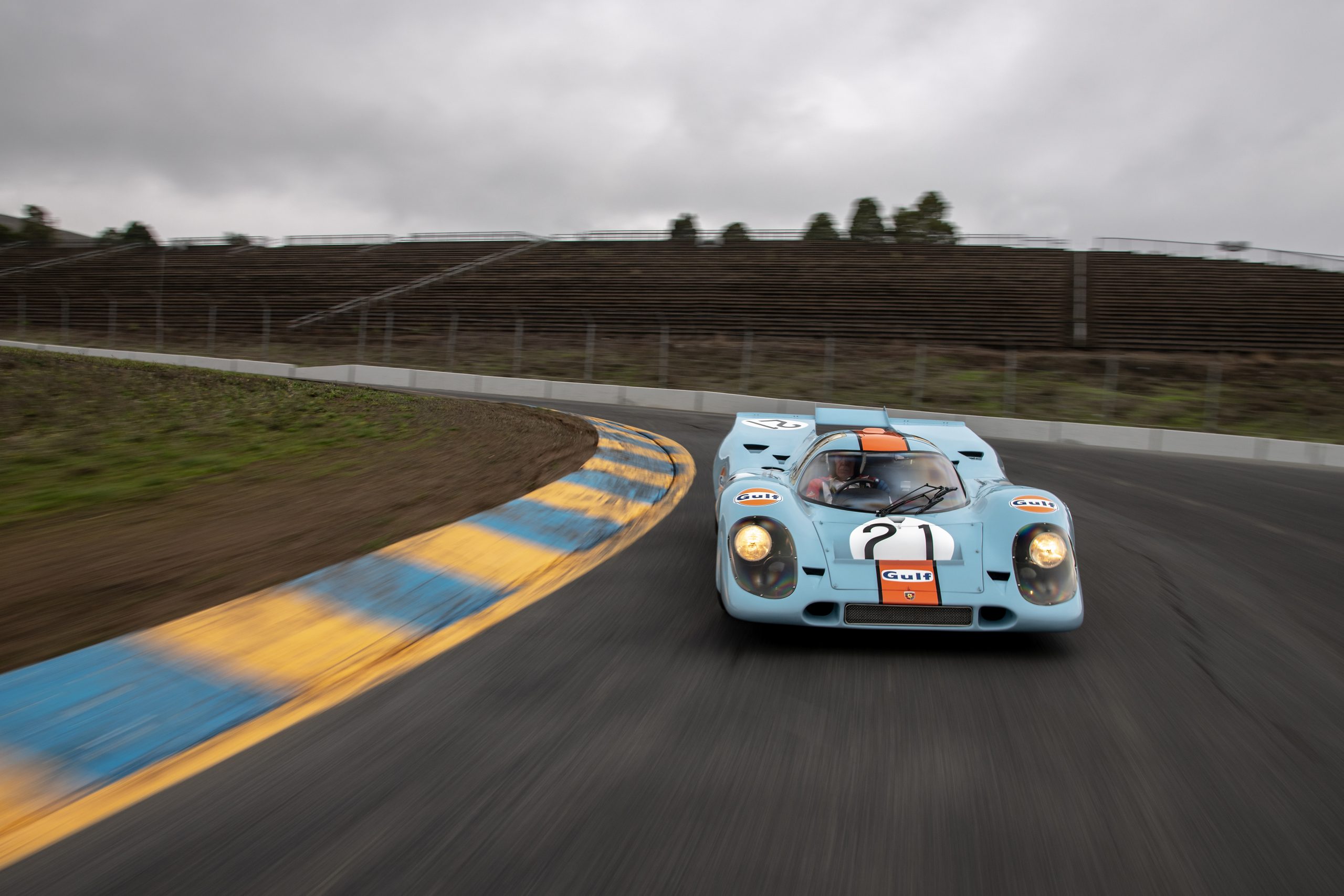
The Porsche Museum guys told me to keep the revs up, but the flat-12 actually feels quite tractable from low revs, and the way it shoots the 917 forward on the lightest throttle opening is quite remarkable. Hold out and it chomps through revs so rapidly – bassy with a kind of distorted ‘flat’ sound at low revs, but deliciously smooth and perfectly balanced as the revs and the treble climbs – that soon you’re reaching for that balsa wood shifter and praying you don’t mis-shift, which can be famously expensive. It’s light enough in its action but needs a confident pull home to engage. Dip the clutch, for a split-second the flat-12 orchestra is replaced by a suck of induction, the gear engages and I’m back on the throttle.
At one point I slot fourth (I don’t even know if our car has a fifth) and the performance is never in doubt, but the brakes are – the pedal’s travel is long and spongey and the stopping power feels decidedly mediocre. Given I can feel the 917 lifting up and feeling skittish over standing water, I’m in no mood to push my luck here, so I just enjoy the experience, driving as hard as I’m comfortable, soaking in this bucket-list moment.
Then I get back to the pits where Richard Attwood is standing waiting, asking what I think, like this is some fuggy jet-lag dream. I’m just glad to get it back the 917 back in one piece and to be one of the few to have experienced it. Incredible to think that in similar conditions 50 years ago, Attwood and Herrmann beat the world.

